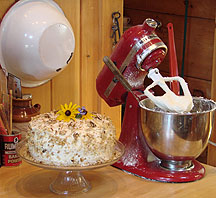
About Buck Island Bay Decoys
 Now located in Montebello, Virginia at the Rock-n-Creek Cabin, visitors are welcome to drop by my studio where I’ll be carving Buck Island Decoys, an artisan passion of mine for over 20 years. Visits are by appointment by emailing the address above.
Now located in Montebello, Virginia at the Rock-n-Creek Cabin, visitors are welcome to drop by my studio where I’ll be carving Buck Island Decoys, an artisan passion of mine for over 20 years. Visits are by appointment by emailing the address above.
History
Buck Island Bay is an actual place located in the Back Bay area of the Currituck Sound located at 36-29’36″ N latitude and 075-58’14″W longitude. Buck Island Bay is a body of water that connects the southern most part of Sandbridge, Va., to the Outer Banks of North Carolina. It is a narrow strip of land only a half-mile wide separates the Atlantic Ocean and the Currituck Sound.
A body of water and land that is rich in history, it offered the sportsmen a pristine area to hunt waterfowl. Being a relatively calm body of water, it offers migratory waterfowl, ducks, geese and shorebirds all they needed to sustain themselves during this flight.
At the turn of the century, many native watermen turned to the waterfowl as a means to support their families during the winter months when fishing was nonexistent. They became hunt guides and carved decoys from dunnage that they collected from fallen ships and debris sweep from the decks of ocean steamers and sailing vessels during violent storms.
These decoys were tools of the trade, made very primitive, using the basic tools to make them. When affordable, they were hand-chopped from native white cedar and tupelo gum. After hunting season, most guides were so poor that they burned the decoys for heat during cold winter months. They then recarved new decoys before the hunting season.
Learning the Trade
Generations of waterfowelers still carry on the tradition of decoy carving in this rural rugged area today. I was always intrigued about this art of creating a tool to trick waterfowl into pitching towards the gunners waiting for their arrival. I wanted to learn this trade.
During my career as an executive chef, I carved large blocks of ice weighing over 300 pounds for my buffet displays. Carving anything and everything you could imagine to offer appeal to my food creations. This was back in the ’80s. I felt that if I could carve ice, then I could carve in wood. I started attending waterfowl shows, mostly in Virginia and North Carolina. Where the old-timers guarded their techniques with their lives.
I quickly befriended all that I could, pleading with these curmudgeons to pass this trade on to the youth coming up behind them. I finally convinced the Waterfields, Lovetts and White Clans to teach me, and they did. I was like a sponge learning and picking their brains for all it was worth. I learned quickly, and in no time I was carving my own future heirlooms.
Mastering the Techniques
I mastered my own coveted techniques and guarded them the same way the old-timers did. I felt confident enough to attend a decoy show as a carver selling my wares. My decoys had there own unique style and patina that even some of the old masters couldn’t duplicate. I was off to a great start with a very rewarding hobby.
I entered shows and carving contests and won numerous ribbons of all colors and blue-ribbon first-place championships. I have been written up in numerous publications and have attended many decoy shows. Once my decoys became well sought after. I moved into a higher category and I starting showing in juried fine art shows. Selling my decoys to people from all over the world. I would always ask a customer buying my birds just where this decoy was headed. It’s final resting place. In the beginning, I always keep a record of this, but it became hard to keep tract of after they became in such demand.
Highly prized as works of art, Buck Island Bay Decoys has been commissioned to carve unique carvings for people of all walks of life. The Nature Conservancy of Virginia was one of my regulars, commissioning my work to be given as tokens of appreciation to benefactors. Today the tradition continues.





